
Published on September 10, 2025
Training Integral for Keeping Community Safe
When it comes to public safety, preparation is key. Behind the scenes of every response to a house fire or medical emergency are thousands of hours of training that went into ensuring St. Albert Fire Services is at its very best.
So, what kinds of training does a firefighter/paramedic do throughout the year?
“There’s training happening all year round whether it’s for a new recruit class that has started, or for our regular platoons to enhance their existing skills,” says Corey Schram, Chief Training Officer. “In addition to their basic fire training, our new recruits that started this summer underwent wildland firefighter training, water rescue, advanced cardiac life support and high-performance CPR training as well as pediatric advanced life support training – just to name a few.”
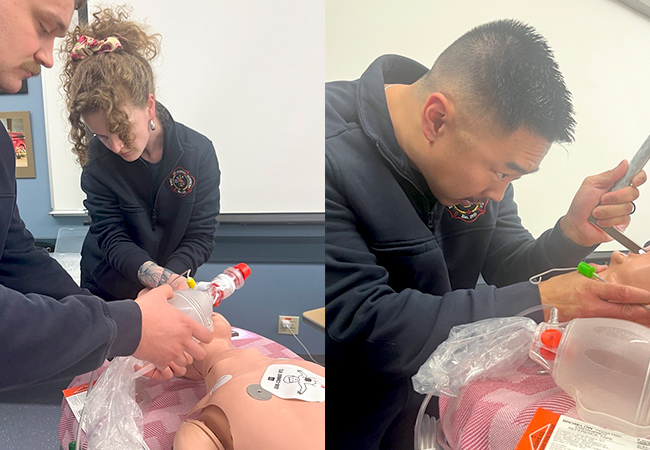
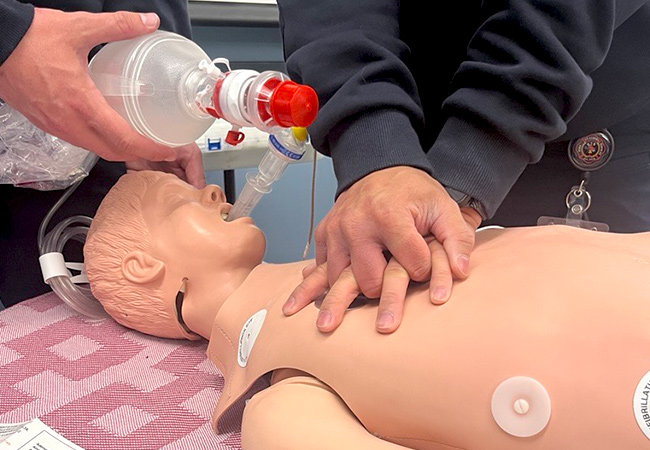
Did you know? In 2024, St. Albert Fire Services responded to over 9,400 calls and completed 7,500 hours of training!
Pediatric Advanced Life Support Training
St. Albert Fire Services prepares itself for patients of any age through courses like Pediatric Advanced Life Support Training (PALS).
“When it comes to adults and children, they’re completely different patients from their airways, head shapes, medication dosages and even the equipment we use,” says Mike Chyka, Training Officer. “We use something called a ‘Broselow tape’ that sits right next to the child and provides an easy reference for medication calculations. When it comes to head positioning, a child’s head is so much bigger in proportion to their body so we have to figure out how to position the head differently.”
Another example Mike explains is that for intubation, an adult would have a tube with a bulb on the end that inflates as airways are so large, whereas a child has a small and narrow airway so no bulb is required.
“Even though the concepts are the same, it’s important to understand these differences so that we can work efficiently to offer life-saving measures to any parent that entrusts their child in our care,” adds Mike.
Live Fire Training
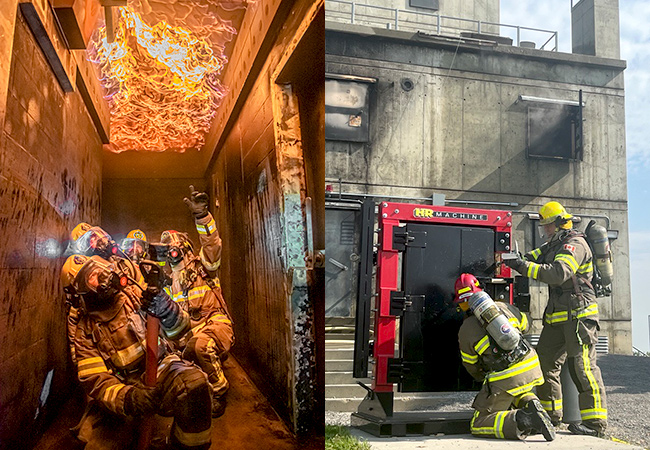
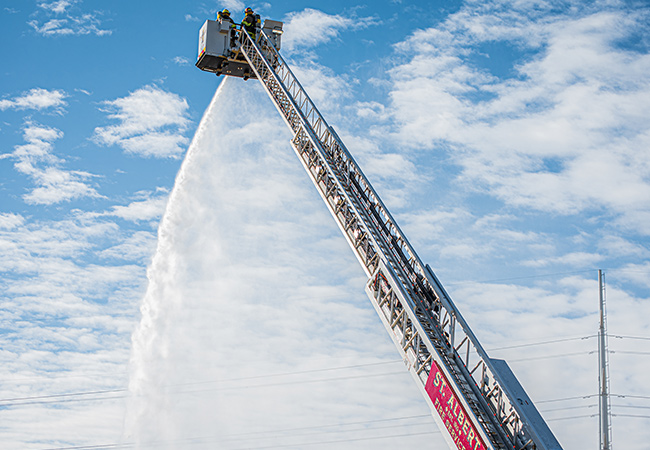
Twice a year firefighter/paramedics complete live fire training where they practice different scenarios related to residential house fires as well as high rise commercial buildings and multi-family residences.
“This year we’re focusing on how to mitigate a fire in a residential home quickly, so it doesn’t spread to become a fully involved structure fire or multiple structure fire,” says firefighter/paramedic Andrew Martin.
Firefighters are also gaining experience on how to work with different sizes of standpipes which are a series of pipes that connect a water supply to hose connections in multi-story buildings.
“The really hard thing to replicate when doing training is the heat, the stress, the reduced visibility and the exposures of a live fire situation. So, when we have the opportunity to have training on site at a live fire facility it allows us to use propane fueled fire props to replicate a kitchen fire or a fire in a bedroom, for example. There’s also theatre smoke produced throughout the building we’re entering to create that high smoke and high flame scenario where our team can come in and practice the skills they need everyday when fighting fires,” adds Andrew.
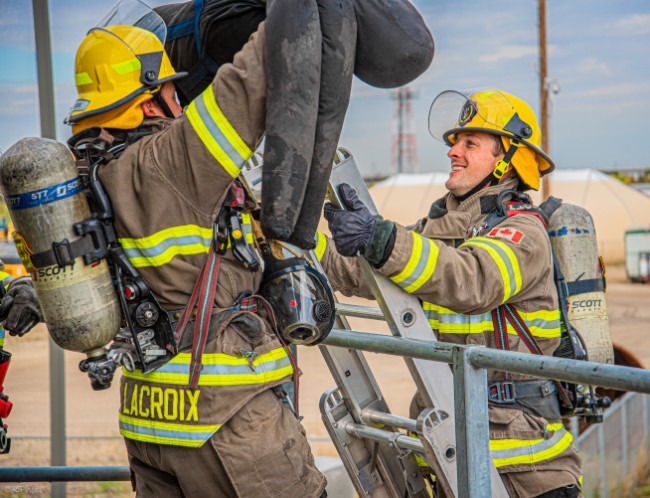
Did you know? On top of full bunker gear, firefighters wear a Scott Air-Pak, carry various tools and a thermal imaging camera which can weigh anywhere from 50 to 70 lbs.
Fit for Duty

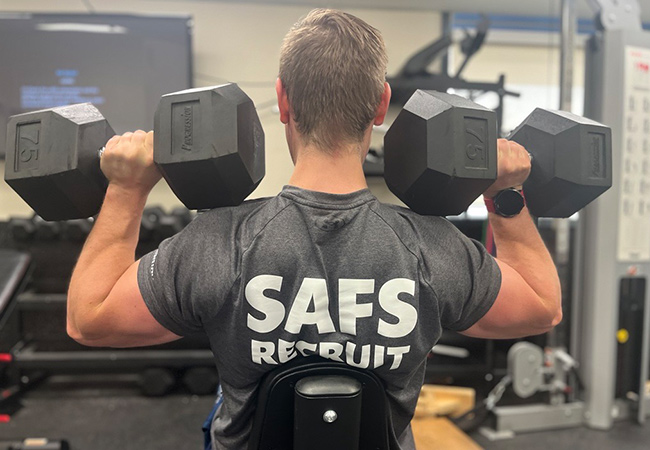
While it’s important to stay on top of new technology and protocols, it’s also integral for a firefighter/paramedic to ensure they’re fit for duty.
Over 90 per cent of the fire department has gone through the recently introduced Fit to Thrive (F2T) program, which is a wellness and fitness program that aims to help firefighters be more active so that they can not only do their job better, but stay active throughout their lives off duty as well.
“The whole goal of this program is better work, life and play balance through physical literacy and mobility screening,” says Mike.
F2T has each firefighter/paramedic undergo a series of tests once a year, which help to showcase areas where improvements can be made. Testing looks at flexibility, body composition, strength and aerobic capacity/endurance. For example, testing may find that mobility needs to be worked on after monitoring knee and back alignment. From there, training programs are implemented to help each individual improve going forward.
Water Rescue
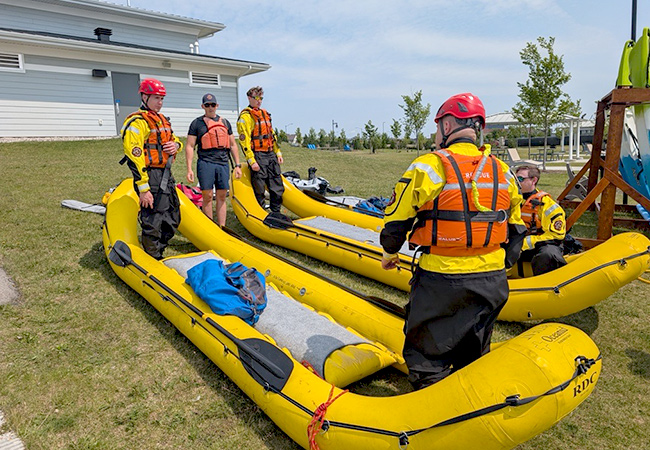
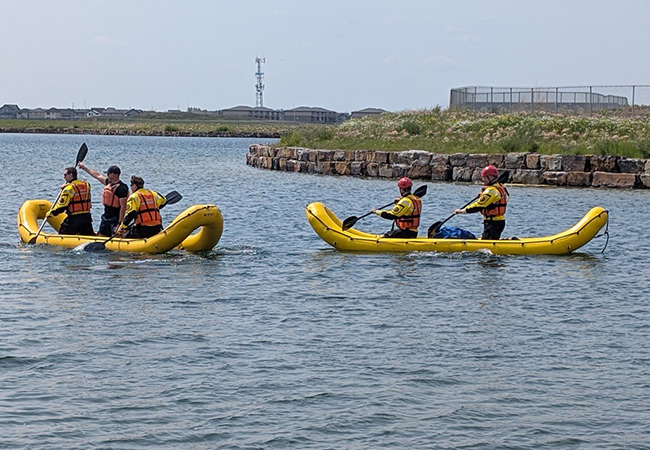
Calling 911 for a water rescue around St. Albert may not seem likely, however, with so many stormwater management facilities around the city, accidents can still happen.
“Our water rescue course is something we target in the spring,” says Corey. “The more you practice things, the more comfortable you become with it as that muscle memory is instilled. We want to make sure all our firefighters are familiar with how to inflate and deflate the boat, paddling techniques and even things like communicating with your partner while out on the water, understanding assigned roles like who is talking to bystanders, how to use landmarks to determine where someone went into the water, and putting on your gear.”
Did you know? The boat used for water rescues has an open haul in the middle so that the patient can be pulled up and through the opening rather than overtop of the sides of the boat.
Learn more about St. Albert Fire Services
Want to stay informed?
Receive weekly updates by subscribing to City Highlights
Last edited: September 10, 2025